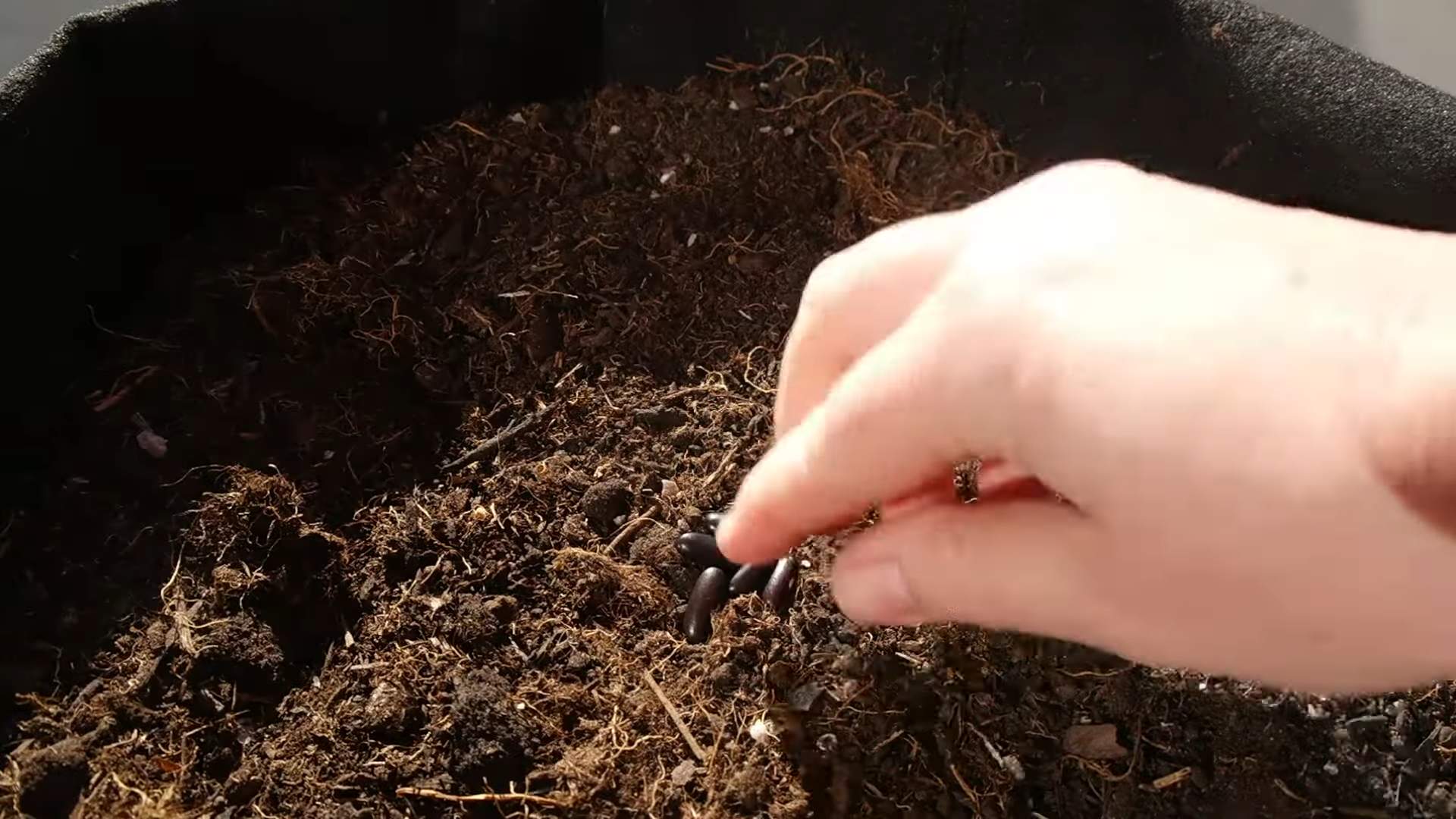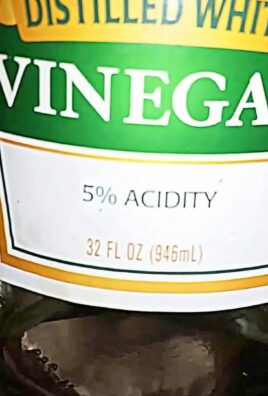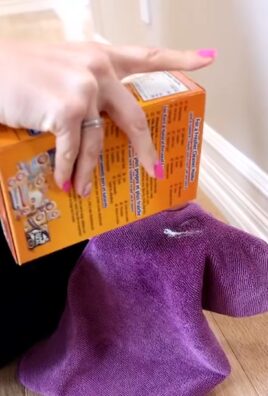Everyday salt tips and tricks – who knew something so common could be so incredibly versatile? I’m constantly amazed by the hidden potential lurking in my pantry, and salt is definitely a superstar! For centuries, salt has been more than just a seasoning; it’s been a preservative, a currency, and even a symbol of good luck. Think back to ancient Rome, where soldiers were sometimes paid in salt – hence the word “salary”!
But beyond its historical significance, salt is a powerhouse in the modern home, especially when it comes to DIY solutions. Are you tired of struggling with stubborn stains, dealing with pesky ants, or watching your cut flowers wilt too soon? Then you’re in the right place! This article is packed with simple, effective, and budget-friendly everyday salt tips and tricks that will transform the way you clean, garden, and even pamper yourself.
Let’s face it, life can get messy, and sometimes the simplest solutions are the best. Instead of reaching for harsh chemicals or expensive products, discover how a little bit of salt can solve a multitude of everyday problems. I’m excited to share these game-changing hacks with you, so let’s dive in and unlock the amazing potential of this humble ingredient!

Unlocking the Magic of Salt: More Than Just a Seasoning!
Hey there, fellow DIY enthusiasts! I’m so excited to share some amazing salt hacks with you today. We all have salt in our kitchens, but did you know it’s capable of so much more than just adding flavor to our food? Get ready to be amazed by these simple yet effective tricks that will make your life a little easier and a lot more interesting.
Cleaning Powerhouse: Salt to the Rescue!
Salt is a fantastic natural cleaner, and I’ve found it to be incredibly useful around the house. It’s abrasive enough to scrub away grime but gentle enough not to damage most surfaces.
Cleaning Cast Iron Pans
Cast iron pans are a kitchen staple, but cleaning them can be a pain. Forget soap and harsh chemicals! Salt is your new best friend.
1. Scrape off excess food: After cooking, use a spatula to remove any leftover food particles from your pan.
2. Add coarse salt: Pour a generous amount of coarse salt (like kosher salt) into the pan. The amount depends on the size of your pan, but you want a good layer covering the surface.
3. Scrub with a dry cloth or paper towel: Using a dry cloth or paper towel, scrub the salt around the pan in a circular motion. The salt will act as an abrasive, loosening any stuck-on food.
4. Rinse with hot water: Rinse the pan with hot water, making sure to remove all the salt and food particles.
5. Dry thoroughly: This is crucial! Dry the pan completely with a clean towel.
6. Season (optional): To maintain the seasoning of your cast iron, you can heat the pan on the stovetop over medium heat until it’s dry. Then, add a teaspoon of oil (like vegetable or canola oil) and rub it all over the pan with a paper towel. Heat for a few more minutes until the oil starts to smoke slightly. Let it cool completely before storing.
Reviving Cutting Boards
Cutting boards can get pretty gross, especially wooden ones. Salt can help disinfect and remove stains.
1. Sprinkle with salt: Generously sprinkle your cutting board with coarse salt.
2. Rub with lemon: Cut a lemon in half and use it to rub the salt into the cutting board. The lemon juice acts as a natural disinfectant and helps to lift stains.
3. Let it sit: Allow the salt and lemon mixture to sit on the cutting board for about 5-10 minutes.
4. Scrub and rinse: Scrub the cutting board with a sponge or brush, then rinse thoroughly with warm water.
5. Dry completely: Make sure to dry the cutting board completely to prevent bacteria growth.
Cleaning a Scorched Pot
Burnt food at the bottom of a pot? Don’t despair! Salt can help loosen the burnt residue.
1. Pour in salt and water: Cover the burnt area with a thick layer of salt and then add enough water to cover the burnt food.
2. Let it soak: Let the mixture soak for several hours, or even overnight, for stubborn burns.
3. Boil the mixture: After soaking, bring the salt and water mixture to a boil on the stovetop.
4. Scrub and rinse: Once the mixture has cooled slightly, use a spatula or scraper to loosen the burnt food. Then, scrub the pot with a sponge and rinse thoroughly.
Brightening Brass and Copper
Salt can help remove tarnish from brass and copper items.
1. Make a paste: Mix equal parts salt, flour, and white vinegar to create a paste.
2. Apply the paste: Apply the paste to the tarnished brass or copper item.
3. Let it sit: Let the paste sit for about 15-30 minutes.
4. Rinse and polish: Rinse the item with warm water and then polish it with a soft cloth.
Household Hacks: Salt to the Rescue!
Beyond cleaning, salt has some surprising uses around the house.
Testing Egg Freshness
Wondering if your eggs are still good? This simple salt test will tell you.
1. Fill a glass with water: Fill a glass with about 4 inches of water.
2. Add salt: Add 2 tablespoons of salt to the water and stir to dissolve.
3. Place the egg in the water: Gently place the egg in the saltwater solution.
4. Observe:
* If the egg sinks and lies flat on its side, it’s fresh.
* If the egg sinks but stands on one end, it’s still good but should be used soon.
* If the egg floats, it’s no longer fresh and should be discarded.
Preventing Fruit from Browning
Cut apples, pears, and other fruits can quickly turn brown. Salt can help prevent this.
1. Prepare a saltwater solution: Mix 1/2 teaspoon of salt with 1 cup of water.
2. Soak the fruit: Soak the cut fruit in the saltwater solution for about 5 minutes.
3. Rinse and enjoy: Rinse the fruit with fresh water and enjoy! You won’t taste the salt, but it will help keep the fruit looking fresh.
Extinguishing Grease Fires
Important safety tip! Never use water on a grease fire. Salt is a much safer option.
1. Smother the flames: Carefully pour a generous amount of salt onto the flames. The salt will smother the fire by cutting off the oxygen supply.
2. Turn off the heat: Once the fire is extinguished, turn off the heat source.
3. Let it cool: Allow the pan to cool completely before attempting to move it.
Keeping Ants Away
Ants are a common household pest, but salt can help deter them.
1. Identify ant trails: Observe where the ants are entering your home.
2. Sprinkle salt: Sprinkle a line of salt along the ant trails or around areas where you’ve seen ants. The salt will disrupt their scent trails and discourage them from entering.
Absorbing Spills
Spilled wine or juice? Salt can help absorb the liquid and prevent staining.
1. Blot the spill: Immediately blot the spill with a clean cloth or paper towel to remove as much liquid as possible.
2. Cover with salt: Cover the spill with a generous layer of salt.
3. Let it sit: Allow the salt to sit for several hours, or even overnight, to absorb the remaining liquid.
4. Vacuum or sweep: Vacuum or sweep up the salt.
5. Clean the area: Clean the area with a damp cloth and mild soap.
Beauty and Wellness: Salt’s Surprising Benefits
Believe it or not, salt can also be used for beauty and wellness purposes.
Exfoliating Scrub
Salt is a natural exfoliant that can help remove dead skin cells and leave your skin feeling smooth.
1. Mix salt with oil: Mix equal parts salt (sea salt or Epsom salt work well) with a carrier oil like olive oil, coconut oil, or almond oil.
2. Add essential oils (optional): Add a few drops of your favorite essential oils for added benefits and fragrance. Lavender, peppermint, and tea tree oil are great options.
3. Apply to skin: Gently massage the scrub onto your skin in a circular motion.
4. Rinse thoroughly: Rinse your skin thoroughly with warm water.
Sore Throat Gargle
A saltwater gargle can help soothe a sore throat and reduce inflammation.
1. Mix salt with warm water: Mix 1/4 teaspoon of salt with 8 ounces of warm water.
2. Gargle: Gargle the saltwater solution for about 30 seconds, then spit it out.
3. Repeat: Repeat the gargle several times a day.
Foot Soak
A saltwater foot soak can help relieve tired, achy feet and soften calluses.
1. Fill a basin with warm water: Fill a basin with warm water.
2. Add salt: Add 1/2 cup of Epsom salt or sea salt to the water.
3. Soak your feet: Soak your feet in the saltwater solution for about 15-20 minutes.
Reducing Puffy Eyes
Salt can help draw out excess fluid and reduce puffiness around the eyes.
1. Mix salt with warm water: Mix 1/4 teaspoon of salt with 1 cup of warm water.
2. Soak cotton pads: Soak two cotton pads in the saltwater solution.
3. Apply to eyes: Close your eyes and place the cotton pads over your eyelids for about 10-15 minutes.

Conclusion
So, there you have it! A treasure trove of everyday salt tips and tricks that will revolutionize the way you approach cooking, cleaning, and even self-care. We’ve explored how this humble ingredient, often taken for granted, can be a powerhouse of solutions for a myriad of common problems. From enhancing the flavors of your favorite dishes to tackling stubborn stains and soothing minor ailments, salt proves its versatility time and time again.
But why is this DIY approach a must-try? Simply put, it’s economical, effective, and environmentally friendly. Instead of reaching for expensive, chemical-laden products, you can harness the natural power of salt, a readily available and affordable resource. You’ll not only save money but also reduce your reliance on harsh chemicals that can be harmful to both your health and the planet.
Furthermore, these salt tricks are incredibly easy to implement. Most require minimal effort and readily available household items, making them accessible to everyone, regardless of their culinary or DIY skills. The results, however, are far from minimal. You’ll be amazed at the difference a simple salt solution can make in your everyday life.
Ready to take your salt game to the next level? Consider these variations and suggestions:
* **Infused Salts:** Experiment with creating your own infused salts by adding herbs, spices, or citrus zest to coarse sea salt. Rosemary salt, chili salt, or lemon salt can add a unique flavor dimension to your dishes. Simply combine the ingredients and let them infuse for a few days before using.
* **Salt Scrubs:** For a luxurious and exfoliating experience, combine salt with your favorite carrier oil, such as olive oil or coconut oil, and a few drops of essential oil. Gently massage the scrub onto your skin to remove dead cells and leave it feeling soft and smooth.
* **Salt Dough Ornaments:** Get creative and make salt dough ornaments for the holidays or special occasions. Combine salt, flour, and water to create a pliable dough, shape it into desired forms, bake until hardened, and then decorate as you please.
* **Different Types of Salt:** Explore the world of salt beyond the standard table salt. Kosher salt, sea salt, Himalayan pink salt, and fleur de sel each have unique textures and flavor profiles that can enhance your culinary creations.
We’re confident that once you start incorporating these everyday salt tips and tricks into your routine, you’ll wonder how you ever lived without them. The possibilities are endless, and the benefits are undeniable.
So, go ahead and give these DIY tricks a try. We encourage you to experiment, adapt, and discover new and innovative ways to utilize the power of salt. And most importantly, we want to hear about your experiences! Share your successes, your challenges, and your own unique salt-related discoveries in the comments below. Let’s create a community of salt enthusiasts and learn from each other. Your insights could inspire others to embrace the versatility of this amazing ingredient and unlock its full potential. Don’t be shy – share your salt stories today!
Frequently Asked Questions (FAQs)
What type of salt is best for these tricks?
The best type of salt depends on the specific trick you’re trying. For general cleaning and stain removal, regular table salt or kosher salt works well. For cooking, kosher salt is often preferred due to its larger crystals and cleaner taste. Sea salt is a great option for finishing dishes and adding a burst of flavor. Himalayan pink salt is prized for its mineral content and subtle flavor. Experiment with different types of salt to find what works best for your needs and preferences.
Is it safe to use salt on all surfaces?
While salt is generally safe, it’s important to exercise caution when using it on certain surfaces. Avoid using salt on delicate or easily scratched surfaces, such as polished wood or certain types of metal. Always test a small, inconspicuous area first to ensure that the salt doesn’t cause any damage or discoloration. For sensitive surfaces, consider using a diluted salt solution or a gentler cleaning method.
Can I use iodized salt for these tricks?
Yes, you can use iodized salt for most of these tricks. However, some people prefer to use non-iodized salt for cooking, as they believe that the iodine can impart a slightly metallic taste. For cleaning and other non-culinary applications, iodized salt is perfectly fine.
How do I store salt properly?
Salt should be stored in an airtight container in a cool, dry place. This will prevent it from clumping or absorbing moisture. Avoid storing salt near strong odors, as it can absorb them. With proper storage, salt can last indefinitely.
Can salt really help with sore throats?
Yes, gargling with warm salt water is a well-known remedy for sore throats. The salt helps to draw out fluids from the tissues in the throat, which can reduce inflammation and pain. It also helps to loosen mucus and clear away irritants. Simply dissolve 1/2 teaspoon of salt in 8 ounces of warm water and gargle for 30 seconds, then spit it out. Repeat several times a day as needed.
What are the environmental benefits of using salt for cleaning?
Using salt for cleaning is an environmentally friendly alternative to harsh chemical cleaners. Salt is a natural and biodegradable substance that doesn’t release harmful chemicals into the environment. By using salt, you can reduce your reliance on synthetic cleaning products and minimize your impact on the planet.
How can I make my own flavored salts?
Making your own flavored salts is easy and fun! Simply combine salt with your favorite herbs, spices, or citrus zest. For example, you can combine sea salt with dried rosemary, thyme, or oregano to create an herb-infused salt. Or, you can mix salt with chili flakes, garlic powder, or onion powder for a spicy salt blend. To make citrus salt, combine salt with the zest of lemons, limes, or oranges. Spread the mixture on a baking sheet and bake at a low temperature until dry. Then, store in an airtight container.
Is there a difference between table salt, sea salt, and kosher salt?
Yes, there are differences between table salt, sea salt, and kosher salt. Table salt is typically mined from underground deposits and is heavily processed. It often contains additives, such as iodine and anti-caking agents. Sea salt is harvested from evaporated seawater and retains trace minerals that can affect its flavor. Kosher salt is a coarse-grained salt that is often used in cooking because it dissolves easily and doesn’t contain iodine. Each type of salt has its own unique characteristics and is best suited for different purposes.
Can salt be used to remove red wine stains?
Yes, salt can be an effective way to remove red wine stains. Immediately after the spill, cover the stain with a generous amount of salt. The salt will absorb the wine and prevent it from setting into the fabric. Let the salt sit for several hours, or even overnight, then vacuum it up. If the stain persists, repeat the process or try a commercial stain remover.
What are some other unexpected uses for salt?
Salt has many other unexpected uses beyond cooking and cleaning. It can be used to:
* Keep cut flowers fresh longer.
* Prevent apples and pears from browning.
* Clean cast iron skillets.
* Remove mildew from shower curtains.
* Soothe bee stings and insect bites.
* Exfoliate skin.
* Brighten dull laundry.
The possibilities are endless!




Leave a Comment